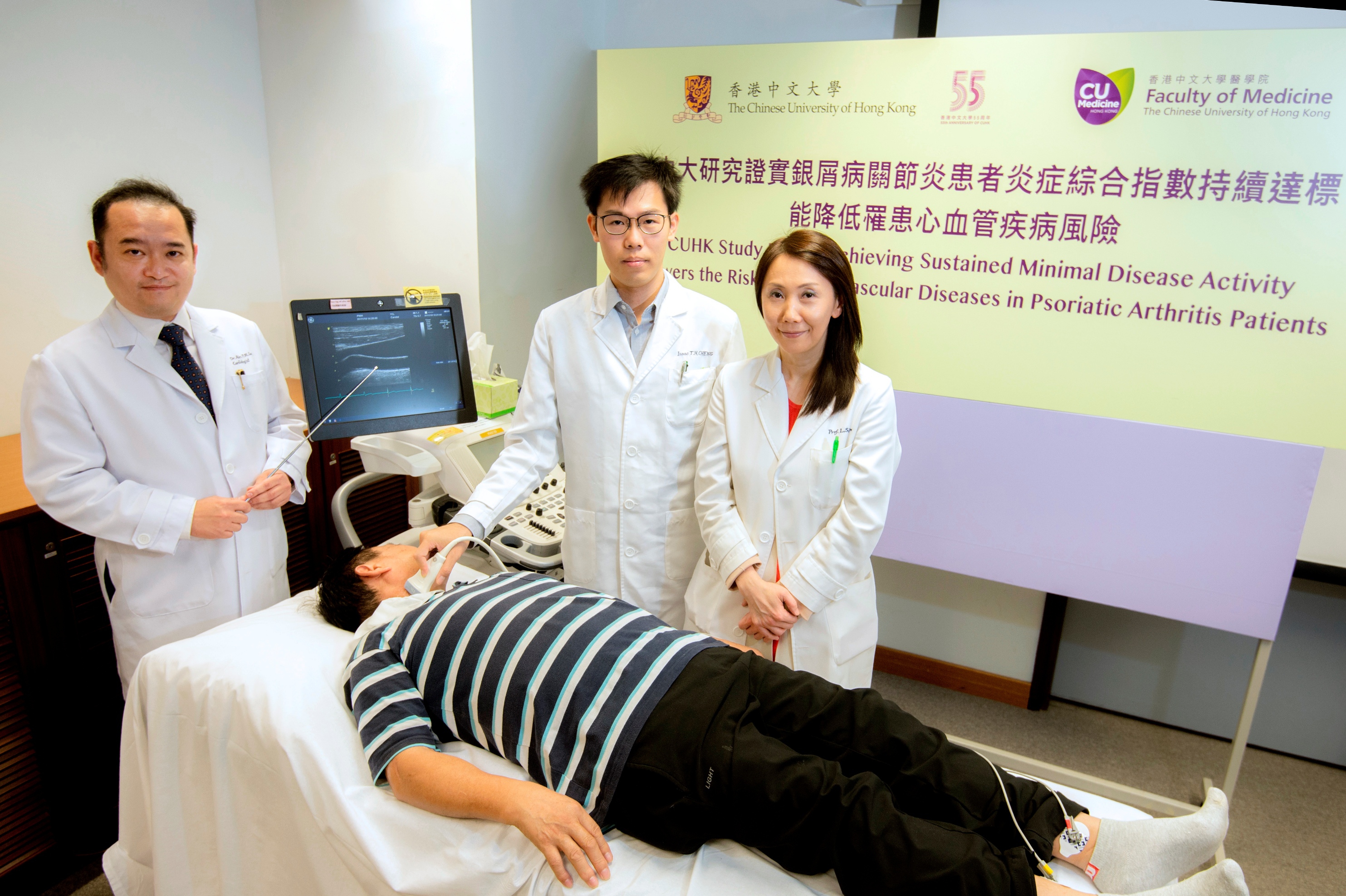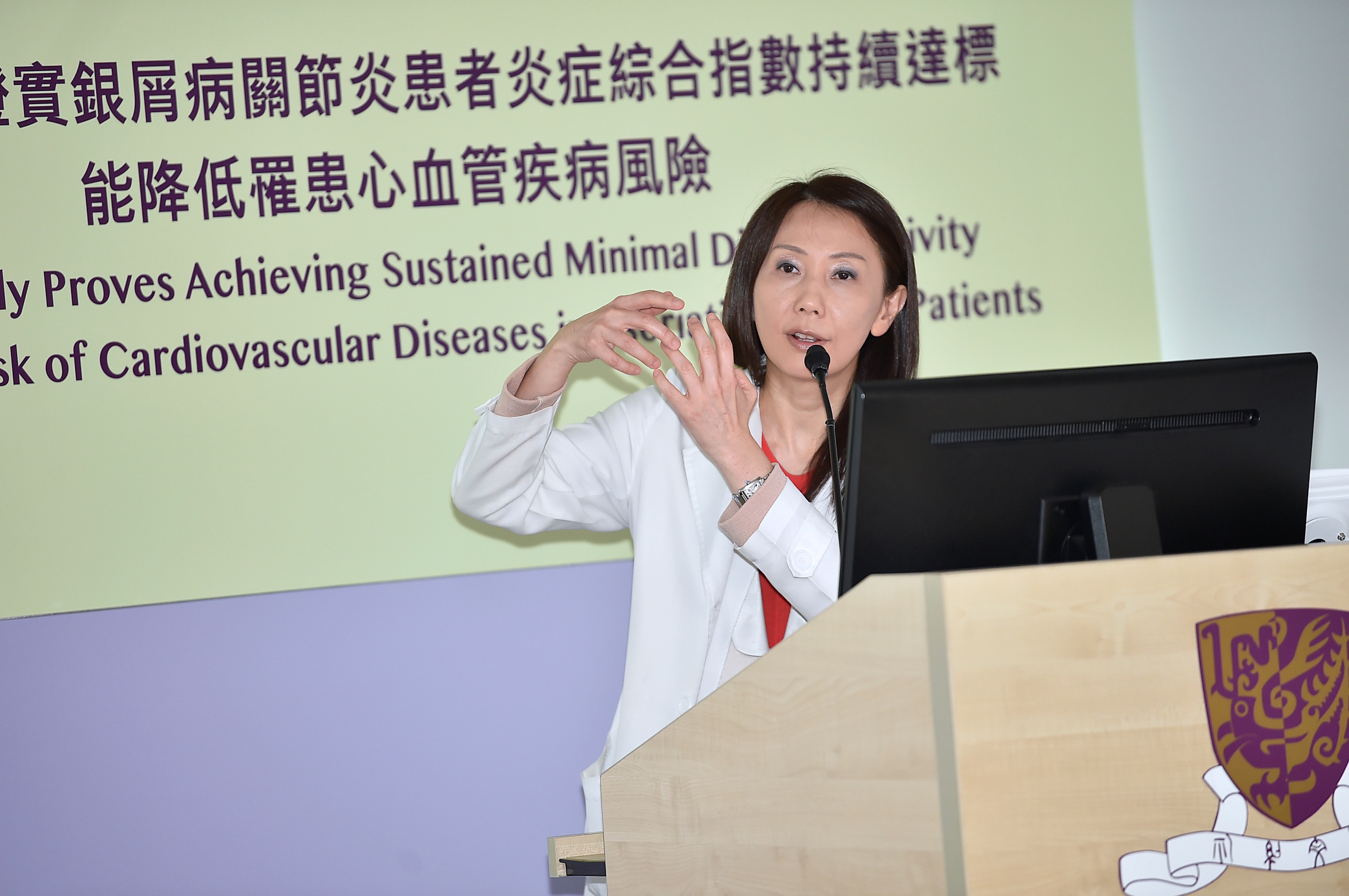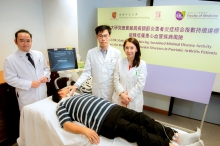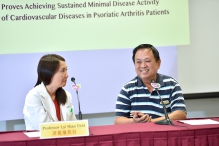CUHK
News Centre
CUHK Study Proves Achieving Sustained Minimal Disease ActivityLowers the Risk of Cardiovascular Diseases in Psoriatic Arthritis Patients
A recent study conducted by the Faculty of Medicine at The Chinese University of Hong Kong (CUHK) shows that the risk of cardiovascular diseases in psoriatic arthritis patients can be lowered by achieving sustained minimal disease activity (sMDA). This is the world’s first study to prove that achieving sMDA helps lower the cardiovascular diseases risk factors in psoriatic arthritis patients. Their Carotid Intima-Media Thickness (CIMT) shows a greater improvement i.e. 3 times better than in those who cannot achieve sMDA while carotid plaque progression is observed less frequently in the sMDA group. These demonstrate that sMDA helps protect the cardiovascular system of psoriatic arthritis patients. The study results have been published in the medical journal Arthritis & Rheumatology.
Cardiovascular Diseases Risk in Psoriatic Arthritis Patients is 40% Higher than Healthy Individuals
It is estimated that psoriasis affects 1% of the global population. The disease onset is the most common in the age ranges of 20 to 30 and 50 to 60. It occurs when the immune system starts attacking the healthy cells and tissues but it is not entirely clear why the abnormal immune response happens. Although the disease is not contagious, patients suffer both psychologically and physically because of the symptoms, which include red patches of skin topped with silvery scales. Amongst all the psoriasis patients, around 10% to 30% will develop psoriatic arthritis which will lead to joint deformity.
The risk of cardiovascular diseases in psoriatic arthritis patients is 40% higher than that of healthy individuals. Cardiovascular risk assessment is recommended for these patients at least once every 5 years. For patients with low to moderate cardiovascular risk, they can also consider receiving ultrasound examination of the carotid artery to check for fatty substances and cholesterol deposits, called plaque.
Dr. Alex Pui Wai LEE, Associate Professor, Division of Cardiology, Department of Medicine and Therapeutics, Faculty of Medicine at CUHK, explained, “Traditional cardiovascular diseases risk factors such as hypertension and dyslipidaemia are common in psoriatic arthritis patients. Meanwhile, the level of inflammation factor continues to be too high in their bodies. All these factors weaken their cardiovascular health and so it is essential to intervene at an early stage in order to minimise the disease activity.”
Achieving sMDA Lowers Risk Factors of Cardiovascular Diseases
To understand how the suppression of inflammation in psoriatic arthritis patients can help improve their cardiovascular conditions, the Division of Rheumatology and the Division of Cardiology of the Department of Medicine and Therapeutics of the Faculty of Medicine at CUHK have collaborated to conduct a study with 90 psoriatic arthritis patients.
The participating patients were 50 years old on average and suffered from the disease for around 10 years. CIMT and carotid plaque of the patients were assessed at baseline, the middle stage (month 12) and the final stage (month 24) of the study. The results showed that in the middle stage, over 60% of the patients achieved minimal disease activity. In the final stage, almost 50% of the patients achieved sMDA from month 12 to 24. Patients in the sMDA group had a larger reduction in CIMT and a lower ratio of them showed carotid plaque progression, compared with those who could not achieve sMDA. Details are tabulated as follows:
|
|
Patients achieved sMDA |
Patients cannot achieved sMDA |
|
Reduction in CIMT |
0.04 mm |
0.01 mm |
|
Ratio of patients with plaque progression |
29% |
45% |
Professor Lai Shan TAM, Head of Division of Rheumatology, Department of Medicine and Therapeutics, the Faculty of Medicine at CUHK, stated, “Our study shows that achieving sMDA helps protect the cardiovascular system of psoriatic arthritis patients and reduce their risk of atherosclerosis. This may be due to the fact that patients with sMDA are less likely to develop bouts of uncontrolled and sustained systemic inflammation which contribute to atherosclerosis and cardiovascular diseases. We hope to demonstrate the importance of suppression of inflammation in psoriatic arthritis patients, thereby reducing the impact of cardiovascular disease on the patients and the medical burden.”
Professor Tam added that plaque progression was still observed in around 30% of patients in the sMDA group. In addition to achieving sMDA, these patients must pay attention to other traditional cardiovascular diseases risk factors to prevent this complication in the future. The research team will also conduct further studies to assess how much the risk of cardiovascular diseases can be reduced by achieving sMDA.
A study conducted by the Faculty of Medicine at CUHK shows that the risk of cardiovascular diseases in psoriatic arthritis patients can be lowered by achieving sustained minimal disease activity. This picture shows the research team demonstrating the Carotid Intima-Media Thickness measurement. (From left) Dr. Alex Pui Wai LEE, Associate Professor of the Division of Cardiology; Mr Isaac CHENG, research assistant; and Professor Lai Shan TAM, Head of Division of Rheumatology, Department of Medicine and Therapeutics.
Professor Lai Shan TAM states that finger joint deformity is a common symptom in psoriatic arthritis patients.







